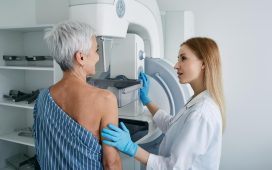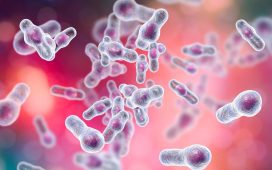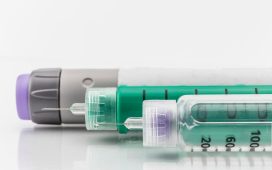Persistent detection of tumor-type HPV DNA during treatment tied to increased risk for recurrence, death
MONDAY, June 10, 2019 (HealthDay News) — Human papillomavirus (HPV) DNA detected from a mouth rinse may be an effective marker for prognosis during treatment of HPV-positive head and neck cancer, according to a study recently published in JAMA Oncology.
Carole Fakhry, M.D., from the Johns Hopkins School of Medicine in Baltimore, and colleagues evaluated oral HPV DNA detection and associations with disease outcomes in 396 patients with newly diagnosed oral cavity (170 patients) or oropharyngeal (217 patients) head and neck squamous cell carcinoma (HNSCC). Oral rinse samples were collected at diagnosis and completion of primary therapy. Weekly oral rinse samples were also collected during radiotherapy. DNA from purified tumor and oral rinse samples were evaluated for 37 HPV types, and type-specific real-time polymerase chain reaction was used to quantify viral load.
The researchers found that the prevalence of oral HPV detection at diagnosis was higher among patients with HPV-positive HNSCC versus those with HPV-negative HNSCC (84.2 versus 12.4 percent). Oral HPV-16 DNA had a sensitivity of 81 percent and 100 percent specificity for HPV-16-positive HNSCC. During primary therapy, the prevalence and load of tumor-type HPV decreased significantly with the odds ratio for probability of infection with each increasing month after diagnosis (odds ratio [OR], 0.41; 95 percent confidence interval [CI], 0.33 to 0.52; P < 0.001), whereas those of nontumor types did not (OR, 1.01; 95 percent CI, 0.97 to 1.06; P = 0.62). Two-year overall survival was significantly lower among HPV-positive patients with persistent detection of tumor-type HPV after therapy versus those without detectable tumor-type DNA after therapy (adjusted hazard ratio [aHR], 6.61; 95 percent CI, 1.86 to 23.44; P = 0.003), as was recurrence-free survival (aHR, 3.72; 95 percent CI, 1.71 to 8.09; P < 0.001).
“Analysis of tumor type HPV DNA has considerable promise as a biomarker for treatment response and risk of progression,” the authors write.
One author disclosed financial ties to the pharmaceutical industry.
Copyright © 2019 HealthDay. All rights reserved.








